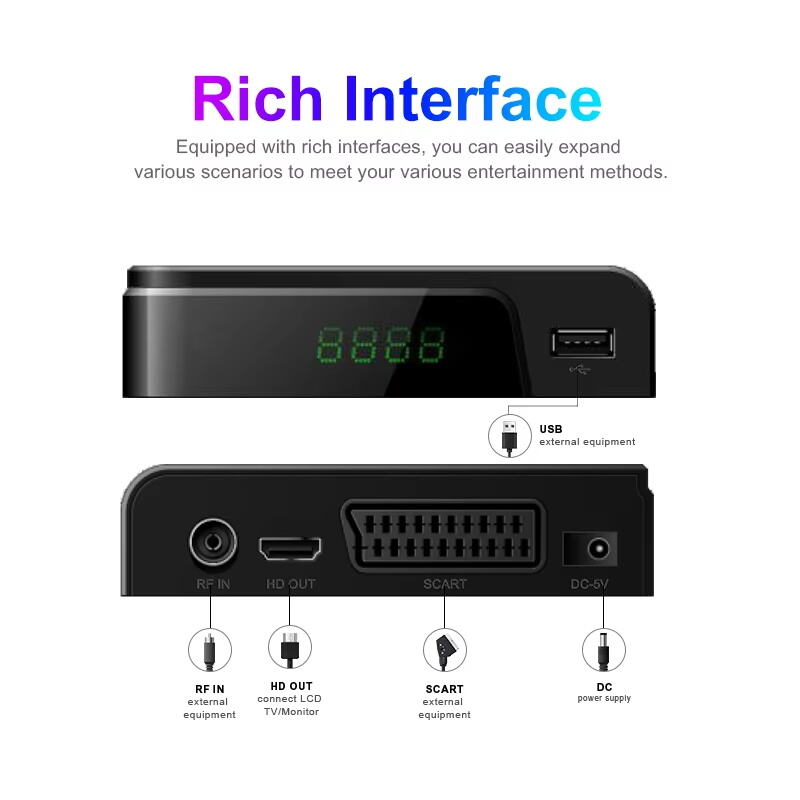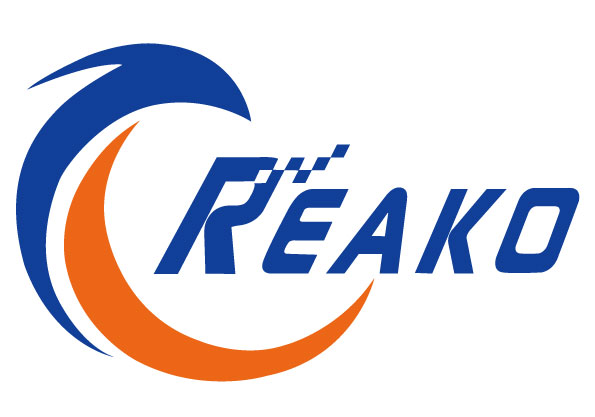ทำความเข้าใจเทคโนโลยีตัวรับสัญญาณ DVB
DVB-S2 กับ DVB-S: พัฒนาการของมาตรฐานสัญญาณดาวเทียม
การเปลี่ยนจากการใช้งาน DVB-S ไปเป็น DVB-S2 ถือเป็นก้าวสำคัญของเทคโนโลยีการออกอากาศผ่านดาวเทียม เมื่อ DVB-S ถูกพัฒนาขึ้นมาเป็นมาตรฐานหลักสำหรับสัญญาณดาวเทียมดิจิทัลครั้งแรก มันได้วางรากฐานพื้นฐานสำหรับการส่งเนื้อหาแบบดิจิทัล แม้ว่าจะมีข้อจำกัดที่สำคัญในแง่ของการใช้แบนด์วิดธ์ รูปแบบ DVB-S2 ที่พัฒนาขึ้นใหม่ในเวลาต่อมานั้นได้มีการพัฒนาอย่างชัดเจนในการส่งข้อมูลให้ได้มากยิ่งขึ้น สิ่งใดที่ทำให้สิ่งนี้เกิดขึ้นได้? คือเทคนิคการบีบอัดข้อมูลที่ดีกว่ารวมกับวิธีการปรับสัญญาณที่มีความชาญฉลาดมากขึ้น การเปลี่ยนแปลงเหล่านี้ทำให้ผู้ให้บริการสามารถส่งเนื้อหาเพิ่มขึ้นได้ประมาณ 30% บนช่องสัญญาณดาวเทียมเดิมเมื่อเทียบกับที่เคยเป็นไปได้ก่อนหน้านี้ สำหรับบริษัทโทรทัศน์ สิ่งนี้ิเปิดโอกาสใหม่ๆ ในการขยายบริการโดยไม่จำเป็นต้องใช้พื้นที่คลื่นความถี่เพิ่มเติม ยิ่งไปกว่านั้น DVB-S2 ยังสามารถใช้งานร่วมกับอุปกรณ์รุ่นเก่าได้ด้วย เนื่องจากยังคงรองรับสัญญาณ DVB-S แบบปกติไว้อยู่ หากพิจารณาจากตัวเลขจริง ปัจจุบันผู้ให้บริการส่วนใหญ่ได้เปลี่ยนมาใช้ DVB-S2 แล้ว ซึ่งตัวเลขเหล่านี้สะท้อนให้เห็นอย่างชัดเจนว่า DVB-S2 นั้นเหนือกว่ามาตรฐานรุ่นก่อนหน้าอย่างไร
ข้อได้เปรียบหลักของเทคโนโลยี DVB รุ่นใหม่
การพัฒนาล่าสุดในเทคโนโลยี DVB ได้นำมาซึ่งการปรับปรุงที่สำคัญในรูปแบบของการออกอากาศ ระบบสมัยใหม่ใช้วิธีการปรับความถี่อัจฉริยะร่วมกับคุณสมบัติแก้ไขข้อผิดพลาดที่มีประสิทธิภาพสูง รวมถึงสิ่งต่างๆ เช่น การแก้ไขข้อผิดพลาดแบบชั้น (Layered Error Correction) ซึ่งช่วยให้ข้อมูลยังคงสมบูรณ์แม้ในกรณีที่การรับสัญญาณมีปัญหา เราได้เห็นการเปลี่ยนแปลงครั้งใหญ่ในวิธีที่เนื้อหาความละเอียดสูง (HD) และความละเอียดสูงยิ่งกว่า (UHD) เข้าถึงผู้ชม ซึ่งสามารถตอบสนองความต้องการที่เพิ่มขึ้นสำหรับคุณภาพของภาพที่ชัดเจนยิ่งขึ้นบนหน้าจอทุกที่ มาตรฐาน DVB ในปัจจุบันยังรองรับบริการเสริมต่างๆ มากมาย ตั้งแต่ตัวเลือกทีวีแบบย้อนกลับ (catch-up TV) ไปจนถึงบริการสตรีมมิ่งที่ทำงานควบคู่ไปกับการออกอากาศแบบดั้งเดิม ตามการวิเคราะห์ตลาด ผู้คนมีความพึงพอใจมากขึ้นกับประสบการณ์การรับชมเนื่องจากคุณภาพของภาพที่ดีขึ้นและการเข้าถึงตัวเลือกโปรแกรมที่หลากหลายมากขึ้นผ่านแพลตฟอร์ม DVB สิ่งที่ทำให้มาตรฐานเหล่านี้โดดเด่นคือความสามารถในการเติบโตและปรับตัวตามกาลเวลา ทำให้มาตรฐานเหล่านี้เป็นพื้นฐานสำคัญสำหรับระบบที่ทันสมัยเกือบทั้งหมดในปัจจุบันทั่วโลก
การรับสัญญาณและข้อมูลจำเพาะทางเทคนิค
แผนการปรับคลื่น (QPSK, 16APSK, 32APSK)
คุณภาพสัญญาณในระบบ DVB ขึ้นอยู่กับรูปแบบการปรับคลื่นที่มีประสิทธิภาพเป็นหลัก QPSK เป็นพื้นฐานของการส่งสัญญาณพื้นฐานที่ทนทานต่อสัญญาณรบกวนได้ดี เมื่อขยับขึ้นไปใช้ 16APSK และ 32APSK ความซับซ้อนจะเพิ่มขึ้นแต่ประสิทธิภาพก็ดีขึ้นมากเช่นกัน รูปแบบขั้นสูงเหล่านี้ช่วยให้ผู้ออกอากาศสามารถส่งข้อมูลได้มากขึ้นในช่องสัญญาณเดียวกัน ซึ่งหมายความว่าสามารถให้บริการเนื้อหาแบบ HD และ UHD โดยไม่ใช้แบนด์วิดธ์เพิ่มมากขึ้น จุดเด่นสำคัญคือความสามารถในการรักษาสัญญาณที่แข็งแกร่งแม้ในสภาพแวดล้อมที่มีสัญญาณรบกวนหรือมีการเปลี่ยนแปลงบ่อย ผู้ให้บริการที่เปลี่ยนมาใช้การปรับคลื่นระดับสูงเหล่านี้ จะสังเกตเห็นการปรับปรุงที่ชัดเจนในด้านคุณภาพและความเสถียรของภาพ มองไปข้างหน้า เทคนิคการปรับคลื่นเหล่านี้จะยังคงมีบทบาทสำคัญในการพัฒนาการออกอากาศดิจิทัล ทำให้เครื่องรับสัญญาณมีความชาญฉลาดและมีศักยภาพมากยิ่งขึ้นในระยะยาว
ความเข้ากันได้ของ LNB และการปรับจูนจาน
การรับสัญญาณที่ดีนั้นขึ้นอยู่กับสองสิ่งหลัก ๆ ได้แก่ ตัวแปลงสัญญาณแบบ Low Noise Block (LNB) และความแม่นยำในการจัดระดับจานรับสัญญาณ อุปกรณ์ LNB เหล่านี้มีความสำคัญอย่างมาก เนื่องจากมันช่วยขยายสัญญาณดาวเทียมที่อ่อนกำลังและแปลงสัญญาณเหล่านั้นให้เป็นสิ่งที่อุปกรณ์ของเราสามารถนำไปใช้งานได้ อย่างไรก็ตาม ตำแหน่งของจานรับสัญญาณก็สำคัญไม่แพ้กัน หากจานไม่ได้หันไปในทิศทางที่ถูกต้อง เราจะเริ่มพบปัญหาต่าง ๆ เช่น ภาพที่เป็นเม็ด ๆ หรือการเชื่อมต่อที่สะดุดระหว่างเกิดพายุ เมื่อเลือกซื้อ LNB ควรตรวจสอบให้แน่ใจว่าอุปกรณ์นั้นสามารถใช้งานร่วมกับระบบ DVB receiver ที่คุณใช้อยู่ได้ จากนั้นก็มีการปรับแต่งค่าต่าง ๆ ที่ค่อนข้างซับซ้อน เช่น มุมเอียง (skew angle) ความสูงระดับ (elevation height) และทิศทางที่จานหันหน้าไป (azimuth) ค่าเหล่านี้จำเป็นต้องปรับแต่งให้เหมาะสมกับสภาพแวดล้อมในพื้นที่ เนื่องจากความแรงของสัญญาณอาจแตกต่างกันไปในแต่ละภูมิภาค การศึกษาต่าง ๆ พบว่า เมื่อจานรับสัญญาณได้รับการจัดระดับอย่างเหมาะสมและใช้ LNB ที่ตรงกับความต้องการ ผู้ชมจะสังเกตเห็นคุณภาพของภาพที่ดีขึ้นอย่างชัดเจน โดยไม่มีปัญหาการค้างหรือโหลดซ้ำบ่อย ๆ การตรวจสอบและบำรุงรักษาเป็นประจำทุกสองสามเดือนจะช่วยยืดอายุการใช้งานและรักษาประสิทธิภาพการทำงานของระบบได้อย่างราบรื่นในระยะยาว
ข้อกำหนดเรื่องการเชื่อมต่อและการเชื่อมต่ออินเตอร์เฟซ
ช่องสัญญาณ HDMI และพอร์ต USB สำหรับความละเอียด 4K/การบันทึกภาพ
สำหรับเครื่องรับสัญญาณ DVB แบบสมัยใหม่ การมีช่องสัญญาณ HDMI ถือเป็นสิ่งจำเป็นอย่างมาก หากผู้ใช้งานต้องการเพลิดเพลินไปกับความละเอียดระดับ 4K บนหน้าจอของตน เนื่องจากมาตรฐานของวิดีโอเปลี่ยนแปลงไปตามเวลา การมีช่องเชื่อมต่อ HDMI ที่ดีจะช่วยให้ได้ภาพที่มีคุณภาพสูงขึ้น และเสียงที่สมจริงมากยิ่งขึ้น ซึ่งช่วยให้การรับชมรายการทีวีและภาพยนตร์มีชีวิตชีวามากขึ้น ผู้ชมทีวีในปัจจุบันส่วนใหญ่จึงต้องการประสบการณ์ที่เหนือกว่าเดิม นอกเหนือจากนี้ยังมีเรื่องของพอร์ต USB ที่เปิดโอกาสในการบันทึกและเล่นเนื้อหาต่าง ๆ ได้โดยตรงจากอุปกรณ์ พอร์ตเหล่านี้ช่วยให้ผู้ใช้งานสามารถใช้ฟังก์ชัน PVR เพื่อหยุดชั่วคราว ย้อนกลับไปรับชมส่วนที่พลาด หรือแม้กระทั่งบันทึกรายการในขณะที่ทำกิจกรรมอื่นอยู่ ความแตกต่างระหว่างมาตรฐาน HDMI 2.0 และเวอร์ชันใหม่อย่าง HDMI 2.1 ก็มีผลอย่างมากต่อประสิทธิภาพของวิดีโอและเสียงจริง ๆ ผู้ผลิตอุปกรณ์ต่างพยายามพัฒนาและก้าวข้ามขีดจำกัดเดิมในทุก ๆ การเปิดตัวผลิตภัณฑ์ใหม่ หากพิจารณาจากความต้องการของผู้บริโภคในปัจจุบัน จะพบว่าผู้คนให้ความสนใจในการรับชมเนื้อหาความละเอียด 4K และสามารถบันทึกได้อย่างสะดวกสบายมากขึ้น สิ่งเหล่านี้แสดงให้เห็นอย่างชัดเจนว่าทำไมอินเทอร์เฟซประเภทนี้จึงยังคงมีความสำคัญอย่างมากสำหรับผู้ที่กำลังติดตั้งระบบ DVB ที่มีประสิทธิภาพ หน้าแรก .
การรวม Ethernet/Wi-Fi เพื่อการสตรีม
เพื่อให้เครื่องรับสัญญาณ DVB สามารถทำงานร่วมกับบริการสตรีมมิ่งได้อย่างถูกต้อง จำเป็นต้องมีการเชื่อมต่อผ่าน Ethernet หรือ Wi-Fi เพื่อให้ผู้ใช้สามารถรับชมรายการต่างๆ จาก Netflix และแพลตฟอร์มออนดีมานด์อื่นๆ ได้ เมื่อทุกอย่างเชื่อมต่อได้อย่างราบรื่นผ่านช่องทางเหล่านี้ ผู้ชมจะสามารถเข้าถึงรายการและภาพยนตร์โปรดได้อย่างต่อเนื่องโดยไม่มีการขัดจังหวะ ซึ่งทำให้การรับชมทีวีดีขึ้นกว่าเดิมมาก เมื่อพิจารณาถึงประสิทธิภาพของการเชื่อมต่อแต่ละประเภท พบว่าสาย Ethernet ให้สัญญาณอินเทอร์เน็ตที่เสถียรกว่า แต่ต้องเดินสายไปทุกที่ ในขณะที่ Wi-Fi ช่วยให้ผู้ใช้สามารถวางกล่องรับสัญญาณไว้ในตำแหน่งที่ต้องการได้โดยไม่ต้องยุ่งยากกับสายไฟที่พันกัน ผู้ผลิตหลายรายกำลังเพิ่มตัวเลือกการเชื่อมต่อที่ดีขึ้น เพราะลูกค้าต้องการอุปกรณ์ที่ใช้งานได้กับบริการที่พวกเขาสมัครใช้บริการอยู่แล้ว ผู้คนใช้เวลากับเครื่องรับสัญญาณ DVB มากขึ้นเมื่อการตั้งค่าทำได้ง่ายและการสตรีมเริ่มต้นได้อย่างรวดเร็วโดยไม่มีปัญหาบัฟเฟอร์
การพิจารณาความเข้ากันได้ของหลายระบบ
ประโยชน์ของเครื่องรับสัญญาณ DVB-S2/DVB-T2 Combo
การนำ DVB-S2 และ DVB-T2 มารวมไว้ในตัวรับสัญญาณแบบคอมโบเดียวกันนับเป็นก้าวสำคัญในการรับสัญญาณออกอากาศ กล่องแบบคอมโบเหล่านี้ช่วยให้ผู้ใช้สามารถเปลี่ยนไปมาระหว่างสัญญาณดาวเทียมและสัญญาณภาคพื้นดินได้อย่างไม่มีปัญหาเลย ซึ่งเป็นเรื่องสำคัญมากเมื่อความแรงของสัญญาณขึ้นอยู่กับทำเลที่อยู่อาศัยหรือสภาพอากาศ ในเมืองใหญ่ ผู้ใช้สามารถประหยัดค่าใช้จ่ายได้เพราะไม่ต้องมีอุปกรณ์แยกสำหรับรับสัญญาณแต่ละแบบ ในขณะที่ผู้อยู่อาศัยในพื้นที่ชนบทก็ได้รับการครอบคลุมสัญญาณที่ดีขึ้น เนื่องจากสัญญาณดาวเทียมสามารถส่งถึงได้ไกลกว่าสัญญาณภาคพื้นดิน ตัวเลขยอดขายแสดงให้เห็นว่าเครื่องรับสัญญาณแบบคอมโบกำลังได้รับความนิยมเพิ่มขึ้นทุกเดือน โดยให้ทุกสิ่งที่ผู้ชมต้องการจากโทรทัศน์โดยไม่ต้องติดตั้งระบบทีวีหลายระบบภายในบ้าน ผลการทดสอบในสภาพแวดล้อมจริงยังแสดงให้เห็นว่าผู้ชมชื่นชอบเช่นกัน เพราะสามารถเข้าถึงช่องรายการได้หลายร้อยช่อง และเปลี่ยนแหล่งสัญญาณได้อย่างไม่มีสะดุดหรือปัญหาทางเทคนิคแต่อย่างใด
การจัดการสัญญาณบนแพลตฟอร์มต่างๆ
การเข้าใจว่าเครื่องรับสัญญาณ DVB จัดการกับสัญญาณบนแพลตฟอร์มต่าง ๆ อย่างไร ถือเป็นสิ่งสำคัญที่ส่งผลโดยตรงต่อประสิทธิภาพการใช้งานจริงของอุปกรณ์เหล่านี้ ความก้าวหน้าทางเทคโนโลยีในช่วงไม่กี่ปีที่ผ่านมานั้นได้เปลี่ยนแปลงเกมของอุปกรณ์เหล่านี้ไปอย่างสิ้นเชิง ทำให้สามารถรับสัญญาณจากดาวเทียม สายสัญญาณ และแม้แต่การเชื่อมต่อผ่านเครือข่ายบรอดแบนด์ พร้อมทั้งยังคงการทำงานที่สอดคล้องกันระหว่างแพลตฟอร์มต่าง ๆ ไว้ได้ นอกจากนี้ ข้อบังคับและมาตรฐานทางกฎหมายก็ยังคงมีการพัฒนาอยู่ตลอดเวลา ซึ่งทำให้ผู้ผลิตต้องปรับตัวเพื่อให้สอดคล้องกับมาตรฐานใหม่ ๆ ที่กำหนดขึ้น เพื่อให้มั่นใจถึงคุณภาพการรับชมที่ดีไม่ว่าผู้ใช้งานจะอาศัยอยู่ที่ใดหรือมีระบบที่บ้านแบบไหน เมื่อพิจารณาจากกรณีการใช้งานจริง ผู้ใช้ที่เปลี่ยนจากการใช้เครื่องรับสัญญาณสำหรับแพลตฟอร์มเดียว มาเป็นเครื่องที่รองรับแหล่งสัญญาณหลายประเภท มักจะรายงานว่าประสบกับประสบการณ์การใช้งานที่ดีขึ้นโดยรวม เนื่องจากมีการควบคุมตัวเลือกในการรับชมที่หลากหลายมากยิ่งขึ้น ผู้เชี่ยวชาญส่วนใหญ่เชื่อว่าเราจะได้เห็นคุณสมบัติการผสานการทำงานที่ล้ำสมัยยิ่งขึ้นในอนาคตอันใกล้ ซึ่งจะช่วยให้การรับชมสัญญาณคุณภาพสูงบนระบบออกอากาศทุกประเภทเป็นเรื่องง่ายดายมากกว่าที่เคย
ประสบการณ์ผู้ใช้งานและคุณสมบัติขั้นสูง
คุณภาพ EPG และการนำทางช่องรายการ
คู่มือโปรแกรมอิเล็กทรอนิกส์ หรือที่เรียกสั้นๆ ว่า EPG มีบทบาทสำคัญในการทำให้การรับชมโทรทัศน์สะดวกยิ่งขึ้นสำหรับผู้ชม โดยรวบรวมข้อมูลรายการทั้งหมดไว้ในที่เดียว คู่มือเหล่านี้ช่วยให้ผู้ชมสามารถเรียกดูช่องต่าง ๆ ตรวจสอบรายการที่จะออกอากาศต่อไป และแม้กระทั่งตั้งค่าเตือนความจำเมื่อมีรายการโปรดออกอากาศ อย่างไรก็ตาม ตัวรับสัญญาณ DVB แต่ละรุ่นนั้นมีคุณสมบัติ EPG ที่แตกต่างกัน บางรุ่นมาพร้อมกับอินเทอร์เฟซที่ใช้งานได้ดีกว่า ทำให้การค้นหารายการที่ต้องการชมนั้นง่ายขึ้น ข้อมูลจากการสำรวจตลาดชี้ให้เห็นว่า ผู้ชมส่วนใหญ่ชอบกล่องรับสัญญาณที่มีระบบนำทางใช้งานง่าย เมื่อผู้ผลิตพัฒนาประสิทธิภาพของระบบ EPG ให้ดีขึ้น ก็จะทำให้ผู้ชมใช้เวลาในการโต้ตอบกับระบบมากขึ้น และส่งผลให้เกิดประสบการณ์การรับชมที่ปรับแต่งได้ตามความต้องการของแต่ละบุคคล ข้อมูลเชิงสถิติก็สนับสนุนเรื่องนี้เช่นกัน ระบบที่มีคุณภาพดีมักจะทำให้ลูกค้าใช้บริการต่อเนื่องยาวนาน แทนที่จะเปลี่ยนไปใช้บริการของผู้ให้บริการรายอื่น
การเลื่อนเวลาการรับชม (Time-Shifting) และการสนับสนุนหลายตัวรับสัญญาณ (Multi-Tuner Support)
เทคโนโลยีการเลื่อนเวลาได้เปลี่ยนวิธีที่ผู้คนรับชมโทรทัศน์ โดยสามารถกดหยุดชั่วคราว เล่นย้อนกลับ หรือกลับมาดูต่อจากที่ค้างไว้ได้แม้ในขณะที่มีการถ่ายทอดสด สำหรับผู้ที่พึ่งพาเครื่องบันทึกวิดีโอแบบดิจิทัล (DVRs) คุณสมบัตินี้ช่วยให้ชีวิตง่ายขึ้น เพราะสามารถดูตอนที่พลาดไปได้ทุกเมื่อที่สะดวกตามตารางเวลาของตนเอง ฟีเจอร์เพิ่มเติมสำหรับการรับสัญญาณหลายช่องทางพร้อมกันนั้นยิ่งเพิ่มความสะดวกมากขึ้นไปอีก ช่วยให้ผู้ชมสามารถบันทึกช่องหนึ่งไว้พร้อมกับรับชมอีกช่องหนึ่ง โดยไม่ต้องกังวลว่าจะพลาดสิ่งสำคัญ การดูตัวเลขจากอุตสาหกรรมแสดงให้เห็นว่าผู้บริโภคให้ความสนใจต่อตัวเลือกการบันทึกที่ทันสมัยเหล่านี้มากขึ้นกว่าเดิม เมื่อเปรียบเทียบตัวรับสัญญาณ DVB ที่มีอยู่ในตลาด จะพบว่ามีความหลากหลายในด้านความสามารถในการเลื่อนเวลา โมเดลบางตัวโดดเด่นเนื่องจากสามารถบันทึกหลายช่องทางพร้อมกัน ซึ่งตอบโจทย์ความต้องการจริงในครัวเรือนปัจจุบัน เมื่อผู้บริโภคเริ่มคุ้นเคยกับบริการสตรีมมิงมากขึ้น คาดว่าความสามารถในการเลื่อนเวลาจะยังคงพัฒนาคุณสมบัติใหม่ ๆ เพื่อให้สอดคล้องกับความคาดหวังในการรับชมสิ่งที่ต้องการเมื่อไรก็ได้ตามต้องการ

การติดตั้งและการคุ้มค่าระยะยาว
การติดตั้งเอง vs. การติดตั้งโดยมืออาชีพ
การติดตั้งเครื่องรับสัญญาณ DVB หมายถึงการต้องเผชิญกับทางเลือกที่ว่าจะทำด้วยตนเองหรือจ้างผู้อื่นให้ช่วยทำ ซึ่งการตัดสินใจนี้มีผลอย่างมากต่อประสิทธิภาพการทำงานที่ได้ในภายหลัง การเลือกทำเองจะช่วยประหยัดค่าใช้จ่ายและให้ผู้ใช้มีการควบคุมเต็มที่เกี่ยวกับตำแหน่งการติดตั้งและรูปลักษณ์โดยรอบบ้านของตนเอง แต่ก็ต้องยอมรับว่าการปรับจูนจานให้ตรงสัญญาณนั้นไม่ใช่เรื่องง่ายสำหรับคนทั่วไป และการรับสัญญาณที่ไม่ดีอาจนำไปสู่ปัญหาความหงุดหงิดตามมาในระยะยาว เมื่อเป็นมืออาชีพที่เข้ามาดำเนินการ จะช่วยนำเครื่องมือเฉพาะทางและประสบการณ์เชี่ยวชาญมาใช้เพื่อให้ทุกอย่างตั้งค่าได้แม่นยำตั้งแต่วันแรก คนส่วนใหญ่มักพอใจกับระบบติดตั้งแบบมืออาชีพมากกว่า เพราะทำงานได้ดีโดยไม่ต้องเดาสุ่มให้ยุ่งยาก แน่นอนว่าการจ่ายเงินเพิ่มในตอนแรกอาจดูเหมือนเป็นเรื่องหนักใจ แต่เมื่อคำนึงถึงจำนวนการเรียกบริการซ่อมแซมที่ลดลงและคุณภาพของภาพที่คงที่สม่ำเสมอทุกเดือน ผู้บริโภคจำนวนมากก็เห็นว่าการลงทุนตั้งแต่แรกเริ่มอย่างถูกต้องนั้นมีคุณค่าอย่างแท้จริง
การอัปเดตซอฟต์แวร์และการรับประกัน
การอัปเดตซอฟต์แวร์ใหม่ล่าสุดให้กับเครื่องรับสัญญาณ DVB นั้นมีความสำคัญอย่างมาก เพื่อให้ได้ประสิทธิภาพสูงสุดจากอุปกรณ์และสามารถใช้งานคุณสมบัติใหม่ๆ ได้ ซอฟต์แวร์อัปเดตเหล่านี้มักจะมาพร้อมกับการแก้ไขด้านความปลอดภัย และการปรับปรุงการทำงาน ซึ่งช่วยให้อุปกรณ์ทำงานร่วมกับเครื่องมืออื่นๆ ได้ดีขึ้น นอกจากนี้ การรับประกันก็มีบทบาทสำคัญมากในการตัดสินใจว่าผู้ใช้จะมีความพึงพอใจในการเป็นเจ้าของอุปกรณ์นั้นในระยะยาวหรือไม่ การเปรียบเทียบเงื่อนไขการรับประกันที่ผู้ผลิตต่างๆ เสนอนั้นถือว่าคุ้มค่า เพราะการรับประกันที่ดีควครอบคลุมทั้งปัญหาด้านฮาร์ดแวร์และปัญหาทางซอฟต์แวร์ที่เกิดขึ้นบ่อย ตามรายงานจากอุตสาหกรรม พบว่าผู้ใช้จำนวนมากที่ยินดีใช้เวลาในการติดตั้งอัปเดตซอฟต์แวร์ และให้ความสำคัญกับระยะเวลารับประกันที่ยาวนาน ซึ่งช่วยสร้างความเชื่อมั่นในอุปกรณ์ของตนอย่างมาก ดังนั้นสำหรับผู้ที่จริงจังกับเทคโนโลยี DVB การมั่นใจว่ามีการสนับสนุนด้านซอฟต์แวร์ที่แข็งแกร่ง พร้อมทั้งมีเงื่อนไขการรับประกันที่ดี ควรเป็นหนึ่งในปัจจัยสำคัญในการตัดสินใจซื้ออุปกรณ์
คำถามที่พบบ่อย
DVB-S และ DVB-S2 แตกต่างกันอย่างไร
DVB-S เป็นมาตรฐานสัญญาณดาวเทียมดิจิทัลรุ่นแรก ในขณะที่ DVB-S2 เป็นเวอร์ชันอัปเกรดที่มีประสิทธิภาพสูงขึ้นและให้ความจุมากกว่าเดิมประมาณ 30% เมื่อเทียบกับ DVB-S
ทำไมการปรับจูนจานสำหรับเครื่องรับ DVB จึงมีความสำคัญ
การจัดวางจานดาวเทียมให้ถูกต้องช่วยให้รับสัญญาณได้ดีที่สุด ลดการรบกวน และรักษาความชัดเจนของสัญญาณ
HDMI outputs มีผลต่อการทำงานของเครื่องรับสัญญาณ DVB อย่างไร
HDMI outputs ช่วยให้สามารถรับชมภาพแบบ 4K คุณภาพสูง พร้อมภาพที่สดใสและเสียงที่สมจริง เพื่อประสบการณ์การรับชมที่ดียิ่งขึ้น
การมีพอร์ต USB ในเครื่องรับสัญญาณ DVB มีประโยชน์อย่างไร
พอร์ต USB ช่วยให้มีความสามารถในการบันทึกและเล่นไฟล์วิดีโอ รองรับฟังก์ชันเครื่องบันทึกวิดีโอส่วนบุคคลเพื่อจัดการตารางเวลาการรับชม
เครื่องรับสัญญาณ DVB สามารถสตรีมเนื้อหาจากบริการเช่น Netflix ได้หรือไม่
ได้ เนื่องจากเครื่องรับสัญญาณ DVB มีการเชื่อมต่ออีเทอร์เน็ตและ Wi-Fi จึงสามารถเข้าถึงบริการสตรีมมิ่งและแพลตฟอร์ม OTT ได้ ซึ่งช่วยเพิ่มทางเลือกด้านความบันเทิง
ฉันควรเลือกติดตั้งเองหรือใช้บริการติดตั้งโดยผู้เชี่ยวชาญสำหรับเครื่องรับสัญญาณ DVB ของฉัน
แม้ว่าการติดตั้งเองจะช่วยประหยัดค่าใช้จ่าย แต่การติดตั้งโดยผู้เชี่ยวชาญจะช่วยให้การปรับตั้งค่าและการทำงานมีความแม่นยำและเชื่อถือได้ ลดการสูญเสียของสัญญาณ และเพิ่มประสิทธิภาพในระยะยาว
สารบัญ
- ทำความเข้าใจเทคโนโลยีตัวรับสัญญาณ DVB
- การรับสัญญาณและข้อมูลจำเพาะทางเทคนิค
- ข้อกำหนดเรื่องการเชื่อมต่อและการเชื่อมต่ออินเตอร์เฟซ
- การพิจารณาความเข้ากันได้ของหลายระบบ
- ประสบการณ์ผู้ใช้งานและคุณสมบัติขั้นสูง
- การติดตั้งและการคุ้มค่าระยะยาว
-
คำถามที่พบบ่อย
- DVB-S และ DVB-S2 แตกต่างกันอย่างไร
- ทำไมการปรับจูนจานสำหรับเครื่องรับ DVB จึงมีความสำคัญ
- HDMI outputs มีผลต่อการทำงานของเครื่องรับสัญญาณ DVB อย่างไร
- การมีพอร์ต USB ในเครื่องรับสัญญาณ DVB มีประโยชน์อย่างไร
- เครื่องรับสัญญาณ DVB สามารถสตรีมเนื้อหาจากบริการเช่น Netflix ได้หรือไม่
- ฉันควรเลือกติดตั้งเองหรือใช้บริการติดตั้งโดยผู้เชี่ยวชาญสำหรับเครื่องรับสัญญาณ DVB ของฉัน


